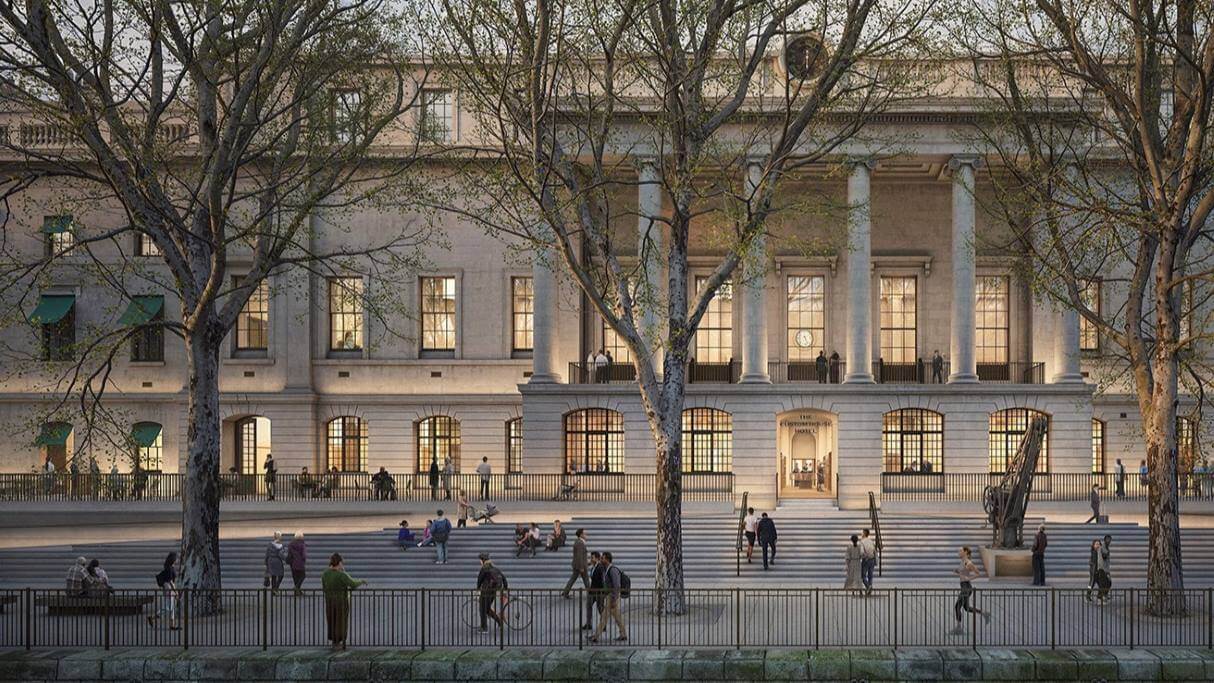
3 April, 2025
New plans submitted for Custom House redevelopment
Learn more
23 July, 2024 · 4 min read
Outlined in principle in this week’s King’s Speech, the Labour Government has set a challenging target to deliver 1.5 million new homes over the next five years. This is part of their agenda to kickstart economic growth, with a social justice dimension, to deliver affordable housing for young people.
With time being of the essence, there are three areas where progress can be made in three areas before the Planning and Infrastructure Bill is enacted.
Applications for large-scale housing schemes often get ‘stuck’ in the system, and Councils delay making decisions for fear of local people’s and Councillors’ reactions. The Secretary of State should use her powers to call in these applications to be determined by a public inquiry instead.
There will also be further nascent schemes, not yet submitted, responding to existing allocations in Local Plans and for the development of ‘grey belts’ such as brownfield Metropolitan Open Land. The change in regime is likely to boost the preparation of these applications, and the Government should take the opportunity to help them progress.
The new task force appointed to accelerate stalled housing sites should, without question, start here.
In addition, forthcoming changes to the NPPF can clearly support housing delivery. Alongside the reinstatement of mandatory housing targets and strengthening of the presumption in favour of sustainable development, three areas would make a significant difference from a historic environment and townscape perspective. These are:
The last update to the NPPF under the previous Government, in December 2023, added five different references to ‘beauty’ and ‘beautiful’. This was influenced by Nicholas Boys Smith, chair of the Building Better, Building Beautiful Commission, and founder of Create Streets.
We agree with the Planning Inspector in the South Bank ITV studio’s decision that ‘beauty’ is a narrow definition and subjective while assessing high-quality design is an objective process (paragraph 14.117) – or at least more objective.
Not only would removing the references to ‘beauty’ from the NPPF support housing delivery, but it should also acknowledge that the requirement for high-quality design increases with the sensitivity of the context, where the townscape is of high quality with numerous heritage designations. It is commonplace—and appropriate—for planning decisions to apply the requirement for high-quality architecture less strictly where the existing townscape is poor and degraded, with no heritage features. Given the economic imperatives, it would be helpful to recognise this in policy.
Prior to the election, Angela Rayner released some images of Edwardian-style mansion blocks and tree-lined streets of townhouses, again under the influence of Create Streets (Times, 6 June 2024), to promote ‘gentle densification’.
This caused consternation in the architectural press. Ben Derbyshire wrote, ‘I get queasy when the machinery of state asserts stylistic preferences’ (Architects Journal, 10 June 2024).
While these images may well have been indicative of pre-election publicity and historicist styles are more palatable to the general public, design does not need to be traditional to be good. With its strong mandate, the Government should be less timid about design. Ideally, the new housing constructed in the coming years should be distinctive to the current era and create a strong sense of place while still responding to the market’s requirements.
Ultimately, to deliver its housing commitments, the Government will need to promote denser development on both green- and brownfield sites.
While the traditional approach is for greenfield sites to be developed with low-density detached or semi-detached houses, with bungalows along the edges, this is not the most effective use of land in increasingly short supply.
Reframing policies to positively promote higher density in areas with good public transport infrastructure, even where this is new land cover, would more effectively address long-term growth.
In London, the use of Public Transport Accessibility Levels (PTAL) has long been used as part of the justification for tall and dense development. This approach needs to be adopted across the country so that sites on the edge of cities and towns with good public transport and rural locations with good rail links are developed at higher densities. This would minimise the amount of land being given over to new development and put people closer to the amenities they need.
Funding cuts since 2010 have brought the planning system to its knees. The new Government has announced funding for 300 new planning officers, but many more will be needed to replace the 3,100 planners who left the public sector between 2010 and 2020.
The system also needs more design and conservation officers, qualified to deal with the nuanced judgments on design quality that rightly form part of our planning process.
We will need more planning inspectors too. The new Government’s objective to deliver more housing for the young people who cannot afford it is to be lauded. However, it will inevitably be contentious at a local level where views of fields may be affected, so it is more likely to be delivered at appeals than in Committee meetings.
The Government should, therefore, also invest in training more planning inspectors to provide capacity at the Planning Inspectorate and build on the Rosewell reforms to speed up appeal decisions.
All of these measures are achievable – both in terms of setting up and delivering the new homes needed. They will allow the sector to continue thinking about high-quality, holistically designed places in the best locations to meet acute needs and make the most of infrastructure opportunities. They should also allow the pace to accelerate to support this new agenda.

12 March, 2025
by Jon Neale
Learn more

18 February, 2025
by Alex Nesti, Eleanor Mazzon, James Huish
Learn more

12 February, 2025
Learn more